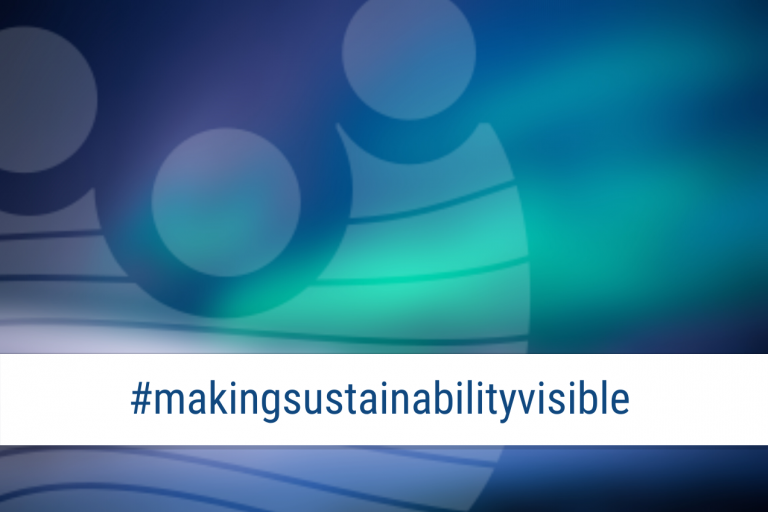The statutory accident insurance is based on the Workers’ Compensation Act, which became valid in 2016. According to the act, employees are entitled to compensation for any accidents occurring at work or occupational diseases caused by work. The state does not have this obligation to insure, but government employees do have the same right to claim statutory compensation, which will then be paid by the State Treasury.
Section 2a of the Act on the State Treasury (305/1991) decrees that these compensation payments produced by the State Treasury are subject to a fee paid by the agencies. The proportion in which the fees are charged from the agencies is decreed in the government criteria for charges payable for accidents (VK/1374/00.00.01.06.00/2019).
According to law, the total amount of the fees must cover all of the expenses to the government, but the annual fee does not have to correspond to the compensation paid in the space of one year. The determination of the payments subscribes to principles of matching and equity. According to the principles, the payments should primarily be directed to the agency whose operations have caused the compensation expense, but within reason.
The expenses are divided between agencies
The criteria for charges payable determine the manner and formulae which are used to divide the expenses for accidents and the resulting treatment between agencies. In addition to government agencies, accident fees are charged from two enterprises: Metsähallitus and Senate Properties.
The accident premium consists of a risk premium, compensation for treatment expenses and a refund for the accrued balance. The claims expenditure affects the risk premium, and the treatment cost coefficient is determined by the costs accumulated by the treatment related to the accidents. The refund for the accrued balance is used to balance the difference between payments and realised compensation from previous years.
Five risk categories for divisions
Each agency is governed by a division, and these divisions are categorised into four different risk categories according to how risky the work supervised by the division is, or more precisely how large the total claims expenditure in the agencies in the division in question is. A specific payment per mill is calculated for each of these four risk categories. The risk categories of the agencies are reviewed annually.
The calculation of the agencies’ risk premiums has been made as simple as possible. The objective is to charge reasonable compensation expenses from agencies. This is why a deductible coefficient is employed in the calculation of the charges. This coefficient illustrates how much the agency’s own claims expenditure affects the payment, and what the proportion of payments based on the larger risk category is. The deductible coefficient is affected by the size of the agency, i.e. the amount of wages paid: the larger the agency, the larger the deductible coefficient. The minimum deductible coefficient is 30% and the maximum deductible coefficient is 90%. If an agency’s deductible coefficient is 40%, for example, 40% of the payment will be based on the agency’s own claims expenditure, and 60% on the risk category claims expenditure. This balances the effect that large, individual cases of damage might have on the charges.
Attenuation and refund coefficients
In order to prevent large fluctuations in claims expenditure from affecting annual charges dramatically, an attenuation coefficient of 30% is also employed in the calculations. The attenuation coefficient ensures that premiums differ from the premium of the previous year by 30% in either direction, at most.
Because the aim is to charge claims expenditures from agencies as accurately as possible, the calculation of the charges also incorporates a refund coefficient for the balance system. The balance system is used to monitor the amount of compensation forwarded from the agencies and the amount of incoming payments paid by the agencies in the long term. This is balanced annually, i.e. if an agency has paid more than they should, the balance refund coefficient is used to refund some of the payments to the agency. However, if an agency has paid too little, the balance refund coefficient is used to collect more payments in order to claim the necessary amount of incoming payments.
Calculations based on plenty of data
The payments for an individual year can never correspond to the actual calculated amount or the amount needed, because the accident premiums for 2020, for example, are calculated based on the payroll information from 2018 (the wages have been adjusted to the estimated 2020 level based on the consumer price index). Palkeet invoices the actual accident premiums from agencies from the realised wages from 2020, which cannot be determined yet. This is one of the reasons why a balance system is needed.
The following information is needed when calculating accident premiums:
- accident compensation paid by agencies in 2015–2018
- wages paid by agencies in 2015–2018
- consumer price indices for 2019 and 2020
- information from the balance system, i.e. the amount of overcharged/uncharged compensation from agencies and enterprises
Once all of the information has been received, and the programs used for the calculation have been updated with new information for 2020, the first estimated premiums are calculated and checked against the previous year. Should the risk category payment coefficients be reviewed, or should an agency be transferred to another risk category? Is there a need to change the criteria for charges? Is there a need to update the constants determined by the criteria for charges?
It was decided that the constants in the criteria for the 2020 charges will remain the same as in 2019.
Accident premiums will be re-calculated next autumn (2020) based on the claims expenditure from 2016–2019.
Payment per mills by accounting unit
Since 2018, payments have been calculated on the accounting unit level instead of the previous agency level. This means that each accounting unit receives its own payment per mill, which is based on the shared claims expenditure of the accounting unit (and the claims expenditure for the risk category in question). The charges paid by enterprises are only based on their own compensation records.
The payment per mill for each accounting unit can be found on the State Treasury website.
The premium for cover corresponding to group life insurance is also collected in connection with the accident premium (financial support premium) and the occupational health and safety premium. The occupational health and safety premium is 0.23 per mill of the amount of wages. In 2020, the financial support premium is 0.30 per mill of wages. The total per mill is the sum of the accident per mill, financial support per mill and the occupational health and safety per mill.
Accident per mills and total per mills by accounting unit can be found in the attached table.
| Accounting unit | Name of accounting unit | accident per mill | total per mill |
| 110 | Parliament of Finland | 1,86 | 2,39 |
| 111 | National Audit Office of Finland | 2,48 | 3,01 |
| 112 | Finnish Institute of International Affairs | 1,59 | 2,12 |
| 120 | Office of the President of the Republic of Finland | 2,83 | 3,36 |
| 125 | Prime Minister’s Office | 2,64 | 3,17 |
| 130 | Ministry for Foreign Affairs | 1,69 | 2,22 |
| 150 | Ministry of Justice | 2,83 | 3,36 |
| 151 | Criminal Sanctions Agency | 7,78 | 8,31 |
| 152 | Finnish Prosecution Service | 2,83 | 3,36 |
| 153 | National Administrative Office for Enforcement | 2,83 | 3,36 |
| 154 | Legal Register Centre | 2,83 | 3,36 |
| 155 | Court Administration Office | 2,83 | 3,36 |
| 200 | Ministry of the Interior | 2,4 | 2,93 |
| 201 | Finnish Border Guard | 11,81 | 12,34 |
| 213 | State Department of Åland | 1,81 | 2,34 |
| 217 | Finnish Security Intelligence Service | 6,25 | 6,78 |
| 220 | Emergency Services College | 2,03 | 2,56 |
| 224 | National Police Board of Finland | 9,38 | 9,91 |
| 232 | Finnish Immigration Service | 2,31 | 2,84 |
| 248 | Emergency Response Centre Administration | 3,01 | 3,54 |
| 250 | Ministry of Defence | 7,58 | 8,11 |
| 251 | Finnish Defence Forces | 7,79 | 8,32 |
| 252 | Construction Establishment of Finnish Defence Administration | 19,68 | 20,21 |
| 300 | Ministry of Finance | 1,77 | 2,3 |
| 301 | State Treasury | 2,34 | 2,87 |
| 302 | Finnish Customs | 6,54 | 7,07 |
| 305 | Tax Administration | 1,8 | 2,33 |
| 306 | VATT Institute for Economic Research | 1,41 | 1,94 |
| 308 | Digital and Population Data Services Agency | 2,62 | 3,15 |
| 309 | Finnish Government Shared Services Centre for Finance and HR | 2,93 | 3,46 |
| 315 | Financial Stability Authority RVV | 2,51 | 3,04 |
| 320 | Government ICT Centre Valtori | 1,44 | 1,97 |
| 321 | Statistics Finland | 2,18 | 2,71 |
| 360 | Regional State Administrative Agency for Southern Finland | 3,51 | 4,04 |
| 380 | Development and Administrative Centre for the ELY Centres and TE Employment and Economic Development Offices | 3,45 | 3,98 |
| 402 | National Land Survey of Finland | 2,4 | 2,93 |
| 410 | Natural Resources Institute Finland | 5,89 | 6,42 |
| 430 | Finnish Food Authority | 6,12 | 6,65 |
| 440 | Ministry of Agriculture and Forestry | 3,65 | 4,18 |
| 450 | Ministry of Transport and Communications | 2,06 | 2,59 |
| 456 | Finnish Transport Infrastructure Agency | 11,61 | 12,14 |
| 480 | Ministry of Transport and Communications | 1,69 | 2,22 |
| 494 | Finnish Meteorological Institute | 2,75 | 3,28 |
| 504 | Geological Survey of Finland | 7,25 | 7,78 |
| 507 | Finnish Patent and Registration Office | 1,89 | 2,42 |
| 509 | Business Finland | 3,17 | 3,7 |
| 513 | Finnish Safety and Chemicals Agency | 1,88 | 2,41 |
| 518 | Energy Authority | 1,99 | 2,52 |
| 519 | Finnish Competition and Consumer Authority | 1,85 | 2,38 |
| 540 | The Ministry of Employment and the Economy | 3,32 | 3,85 |
| 550 | Ministry for Social Affairs and Health | 2,32 | 2,85 |
| 555 | Radiation and Nuclear Safety Authority | 2,67 | 3,2 |
| 558 | Finnish Medicines Agency Fimea | 2,19 | 2,72 |
| 561 | National Institute for Health and Welfare | 4,16 | 4,69 |
| 562 | National Supervisory Authority for Welfare and Health | 1,94 | 2,47 |
| 563 | Social Security Appeal Board | 2,01 | 2,54 |
| 600 | Ministry of Education and Culture | 2,47 | 3 |
| 603 | National Archives of Finland | 2,59 | 3,12 |
| 605 | Academy of Finland | 2,26 | 2,79 |
| 606 | Finnish Heritage Agency | 2,47 | 3 |
| 607 | Governing Body of Suomenlinna | 9 | 9,53 |
| 660 | Finnish National Agency for Education | 4,39 | 4,92 |
| 700 | Ministry of the Environment | 1,99 | 2,52 |
| 701 | Housing Finance and Development Centre of Finland | 1,49 | 2,02 |
| 702 | Finnish Environment Institute | 2,72 | 3,25 |
Example: The State Treasury’s accident per mill is 2.34. Thus, the total per mill of the State Treasury is 2.34 + 0.30 + 0.23, i.e. 2.87.
Further information on how the accident per mills are calculated can be found here tilastot.ja.laskelmat@valtiokonttori.fi.







